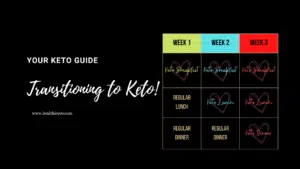Why fast? What are the benefits of fasting? What are the types of fasting – Dry fasting vs wet fasting, long-term fasting, intermittent fasting, and 5:2 fasting? Check out the pros and cons, how fasting helps in weight management, and whether one should exercise while on fast.
To Fast Or Not To Fast?
This topic sounds rather easy, and perhaps it is. Most of the world culturally fasts for one reason or the other, whether it is dry fasting vs wet fasting, intermittent fasting, 5:2 fasting, or long-term fasting. Thus, we shall discuss an issue that has a general cultural connotative meaning for a good number of us, yet there is a specific scientific meaning to it, and to answer the question – to fast or not to fast.
In this blog article, I shall talk about the science of it; even so, I shall remain in the socio-cultural context interspersed with some philosophical monologues. Why so? It is so, that even if I research in the field of nutritional sciences, primarily and firstly, I am a social animal, and I am writing this article for all my other social animals. We probably could get science very efficiently across, if instead of just conversing with colleagues, I would reorient myself to where the real music plays in life, i.e., society in general. Besides, the nutritional sciences are applied science, which demands I ought to be able to converse with whatever science I am trying to deal with, with all my social animals. So, this is a blog article for the real world, for the real you.
From time immemorial humankind in whatever social groups, we got ourselves organized into or found ourselves organized into, followed certain rituals about food. Fasting is one such ritual.
It is probably of great social benefit, that humankind can get organized into such social groups with rituals. Going by the hard criterion of the survival of the fittest, which does not sound altruistic, there would be perhaps only an egotistical determination of our rituals.
In terms of food, it could mean a maximization principle to survive and get the dominant gene ahead. However, that humankind organized themselves into practicing some sort of voluntary acts of relinquishment, in this case with food, which is classically and evolutionary a basic need.
We might say this social animal Homo sapiens might somewhere be striving, even within the confines of certain socio-cultural norms, to be some sort of noble animal as well. Why did humankind’s socio-evolutionary evolve with fasting practices is a scientific question in itself?

Dry Fasting vs Wet Fasting
Fasting in cultural norms takes many meanings, which scientifically could range from what is known as “low calorie“ or “calorie-restricted diets” right up to the scientific understanding of “fasting“. Thus, consuming a lower quantity of food in liquid or solid forms or alternate kinds of food or food forms, such as raw foods only, might be a fasting practice within a cultural norm, scientifically though, it would be a calorie-restricted diet.
Fasting in scientific terms requires the relinquishing of food altogether for an elongated period, i.e. period of about eight hours and longer without any kind of calories.
However, ad-lib consumption of water, unsweetened teas, coffees, etc. are part of the scientific definition of fasting, so long as there is negligible to no appreciable calorie intake. This scientific understanding of fasting would be akin to the sociocultural nomenclature of “wet fasting“.
A related term thereof is “dry fasting” when neither calories nor any kind of water or non-caloric beverages are consumed during the fasting period, such as the one Sunday a month in the Mormon Sunday fast or the Ramadan fast, or the Yom Kippur fast. So, now we know what is dry fasting vs wet fasting, let’s move on to long-term fasting, intermittent and 5:2 fasting.
Long-term Fasting
There is a minority population that practices “long-term fasting“, such as, for periods of 24, 42, 36, 48, 60, or 72 hours, which usually requires nutrient supplementation even so at no calorie intake. For periods of fasting getting longer than this (long-term fasting), we would move into a period of what is no longer “fasting”, but “starvation“.
Food is essential for humankind and within one to two months without food, humans would eventually die. Starvation is not amenable to human survival and is at the other end of the spectrum. Likewise, too many calories over an extended period are also not beneficial.
Thus, scientifically we rarely talk in terms of “negative“ and “positive“ foods, as too much or too little of any food is not survival or health-promoting or does not allow us to recuperate from or manage diseases. Thus, optimal amounts of food, as in a dose, are used as a theoretical construct, an optimum that varies from individual to individual.
The key is to achieve a personal balance, and this balance varies from person to person. Perhaps that is why we as humankind have sayings like “one man’s food is another man’s poison”.
Intermittent Fasting
Further, the scientific understanding of fasting is also “intermittent fasting“, i.e. usually no consumption of calories for a period of eight to 20 hours, classically 12 to 16 hours being most popular though some consider even four to ten hours as a fast. This kind of intermittent, time-restricted eating pattern works like hormesis, i.e. exposition to lower doses of stressors, in our case “fasting”, which ultimately then does us good.
5:2 Fasting
Of late, there is a newer concept of fasting with two days of fasting in the week while keeping to regular eating habits for the remaining five days, called 5:2 fasting.
A rhythm of alternate day fasting, i.e. one day of eating followed by one day of fasting with only 500 calories consumed in one meal per day is also in vogue in addition to 5:2 fasting.
Further, there is another newer interpretation of fasting with liquid foods and juices, which are scientifically “calorie-reduced diets“, and not “fasting“.
For the scientific understanding of 5:2 fasting or any kind of fasting, it is necessary to be without calories for an extended period.
Therefore, we come to the crux question, why fast?

Why Fast?
Of late, I had some talks with those practicing Ramadan fast and they mentioned apart from the religious requirement of fasting, additional reasons, such as the desire to reduce weight, practice self-discipline, practice self-efficacy, and experience transcendental.
Fasting and Weight Management
Scientific discourse on fasting usually occurs in the dimension of ideal or possible weight achievement and maintenance. These also contribute to the largest group of study results on fasting in the scientific literature. This corroborates with the informal talks with those practicing Ramadan fasts, most opinioned fasting as a good means of regulating weight.
Participants with obesity on intermittent fasting for four to eight hours showed a weight loss of about 3%. Studies with participants on alternate-day fasting and 5:2 fasting reported weight loss of 3% to 8%, which was similar to calorie-restricted diets. However, it is essential to mention that these results were obtained with normal and not compensatory, food-eating habits on the non-fasting days.
Compensatory eating is when after a period of fasting, the food amounts that are consumed are much higher and in great excess compared to what the person would have normally consumed in the day.
5:2 Fasting and Weight Management
Another important observation was that the 5:2 fasting, i.e. when the total number of fasting days was lower compared to alternate-day fasts in 5:2 fasting, showed similar weight loss efficiency as alternate fasting days. Thus, while avoiding compensatory eating on non-fasting days in 5:2 fasting, eating regular and sufficient amounts on the non-fasting day is just as important for continued weight loss, and not reaching a plateau.
The most accessible understanding of this is probably, that excess reduction of calories on non-fasting days can shift the body in an internal compensatory process to burn fewer calories in anticipation of a period of starvation, thus promoting organism survival.
Intermittent fasting and 5:2 fasting might require certain physiological considerations. Some might suffer from headaches, nausea, dizziness, or even constipation, which after a period of two weeks of fasting practice usually disappears.
It is important though to remain hydrated in intermittent fasting, not just to avoid headaches, but also to keep all metabolic functions smoothly functioning.
However, in a fasting state, there is an alternate hypothesis of body’s internal metabolic water generation due to the use of body fat as fuel and the by-product being water.
Though this has been knowledge of nutritional biochemistry for long, not all publishing in the nutritional sciences are nutritionists.
A relatively recent study by Meerman in 2014 corroborated this thesis with 84 percent of the fat, which is used as fuel in weight loss, turning into carbon dioxide and being exhaled via the lungs. The remaining 16 percent became water.
Fasting and Exercise
Studies are ambivalent about exercising on days of fasting. Some indicate greater fitness, strength, and endurance and others indicate physical stress.
In general, the more one is a beginner in fasting, whether dry vs wet fasting, or intermittent, or practices it sometimes only, the lesser probably should the person be exercising on fasting days. This probably avoids putting on additional stress on the body, i. e., in addition to the fast.
Those, who are experienced in intermittent fasting, probably can condition the body over an adjustment period to train physically even on fasting days to various individual levels.
While most adult populations can experiment with fasting, children and adolescents in growth phases, pregnant and lactating and those who have any kind of health impairment at any age should not be intermittent fasting.
In addition, those on medication with tailored food and physically in hard work should not intermittent fast.
Dry Fasting vs Wet Fasting & Intermittent 5:2 Fasting Benefits
If our objective is achieving and maintaining weight, fasting is probably as good as calorie-restricted diets, latter, which would include juice fasts, raw food fasts, etc. In this case, fasting is just as good as a low-calorie diet. However, it appears that there might be additional benefits of intermittent fasting. These have been reported as improvements up to the enhancement of mitochondrial health, repair of DNA, and autophagy.
Improvement of mitochondrial health means that our cells produce more energy or energy more efficiently. Largely this means, bypassing glucose with the hormone insulin, indirectly perhaps thus also insulin resistance, since the body in fasting switches to body fat as fuel and thus generates internal ketone bodies for part of the energy production of the day.
Ketones produce energy more efficiently than glucose, which works with the hormone insulin. Insulin resistance means, that even though insulin is being produced, insulin does not do its function of getting glucose into the cell.
In the cell, glucose is used as a fuel. Instead, most glucose gets stored up as fat. It is like having a house full of wood or glucose, but the fireplace or the mitochondrion does not function optimally because the chimney or insulin is blocked.
Insulin per se, i.e., even without any insulin resistance, promotes storage of any excess glucose consumed via diet as fat in the body for hard times, which is the body’s evolutionary survival mechanism, meaning saving for a hard day.
Repair of DNA means that with fasting, DNA in the nucleus of cells gets a chance to be repaired, which processes are slow, and thereby fasting aids in cell and/ or cell-function recovery.
Autophagy has received some amount of scientific investigation and it means that the damaged cells, primarily proteins, of the body go through a clearance cycle and can get recycled and reused. This reduces a load of unhealthy cells and cell structures, which might lead to further blocks in the metabolism, and reutilizes them since nature is very sustainable.
These advantages have been linked, over additional mechanisms, even to longevity, given that there is a consumption of balanced nutrients.
Thus, the true objective of fasting is not only weight management but appears to be achieving and maintaining health.
How is this to be considered with our general current practice of four to six meals or snacks a day?
Classically, humans have never had so much food available as we currently have. That is, from an evolutionary perspective right up to being an agrarian and industrial society, food was limited, financially or out of practical reasons, such as getting to eat before and after work only with no work breaks.
Thus, two meals a day practice with relatively moderate to high physical activity has been more the norm in past years. Food eating was shorter and fasting periods were longer for hunters and food gatherers. It was only the rich landowners, who afforded a greater number of meals a day, which percentage was also marginal in society.
It appears, thus, that low-grade intermittent fasting or 5:2 fasting could be offering additional benefits to weight loss. In the world of hunger with diseases of civilization dubbed “double burden,” we could perhaps try a little reset with “double advantage”, i.e. personal benefit of avoiding diseases of civilization probably through fasting practice and relieving resources that the hungry have food.
As social animals, we are striving towards some goal or another, why not then in the basics, such as nutrition for all? Were then the current world population to remain constant, this might be even a sustainable goal. Finally, though as social animals, this might be noble, albeit in a very pedestrian way of relinquishment.
This article does not reflect any office, institution, or organization that Shoma Berkemeyer works for or is a member of but relates to her own personal opinions as a private person.
Reference
https://pubmed.ncbi.nlm.nih.gov/29086496/

Prof. Shoma Berkemeyer
Related Posts

Fatty Acids, Triacylglycerol, Cholesterol – The Wonders of Fats!



Transition to a Ketogenic Diet & Get Fat Adapted – A Step-by-Step Guide

K3 Spark Mineral Reviews, Ingredients, Benefits, Risks of Mystery Pills & Gummies for Weight loss


